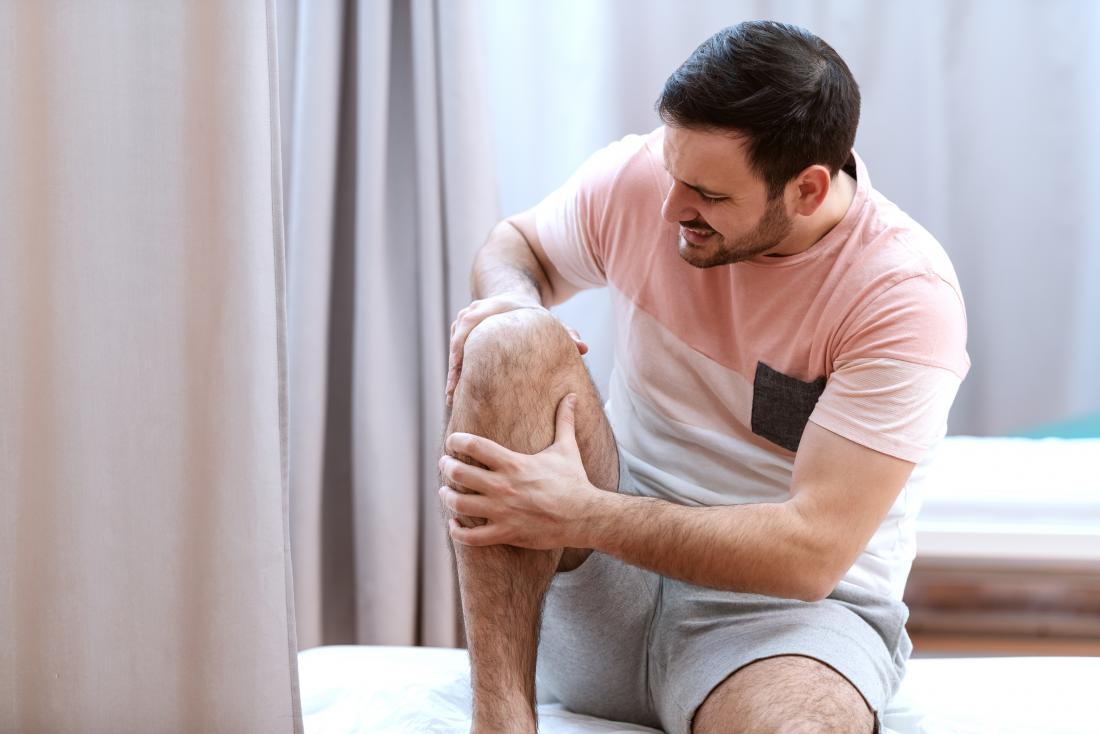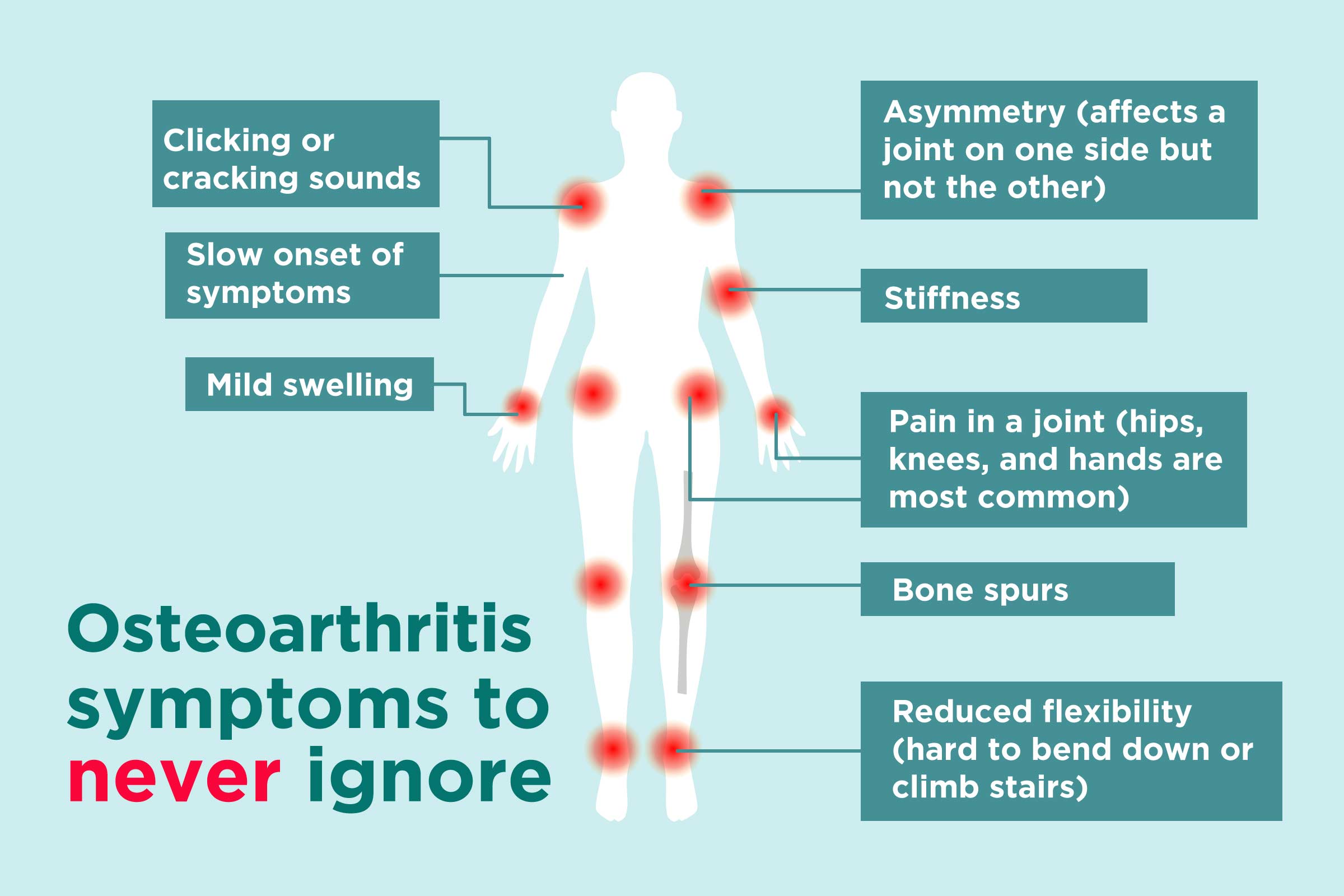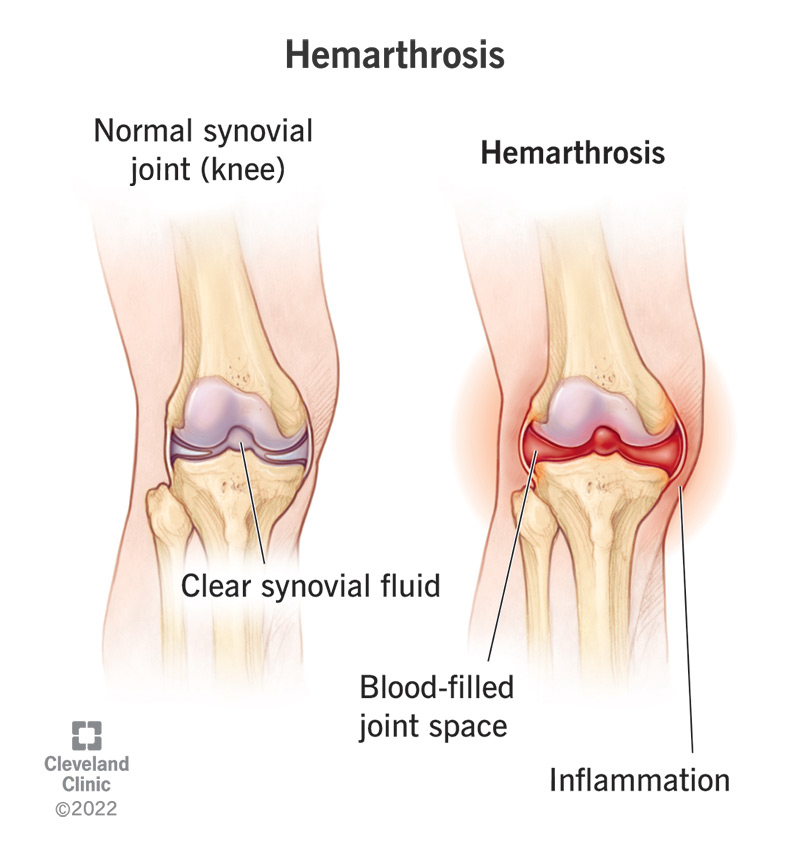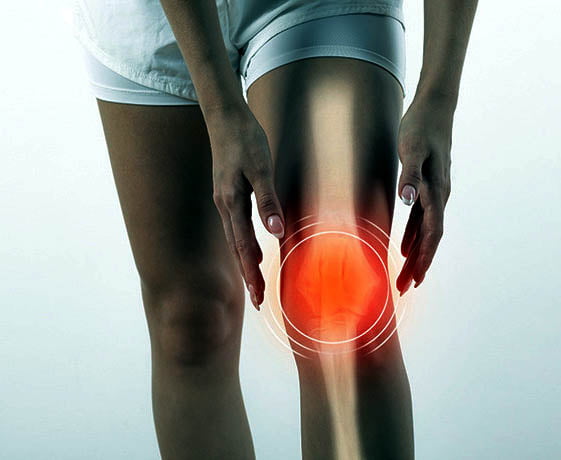Arthritis in Knee Symptoms typically presents with joint pain and stiffness. Swelling, reduced mobility, and a grinding sensation may also occur.
Arthritis is a common joint disorder that can significantly impact an individual’s quality of life. Sufferers typically experience a range of symptoms that can progressively worsen over time. Early detection and management are crucial for reducing the risk of severe joint damage and maintaining daily functions.
The symptoms vary depending on the type of arthritis, but osteoarthritis and rheumatoid arthritis are the most common forms affecting the knee. The discomfort might intensify after prolonged activity, or suddenly flare up, causing considerable distress. Seeking medical advice at the onset of symptoms can lead to more effective treatment options and a potentially more comfortable lifestyle for those dealing with knee arthritis.
Introduction To Knee Arthritis
Introduction to Knee Arthritis opens a window for us to understand the chronic pain that grips many people’s lives. The knee, a hub of movement, becomes the center of attention when arthritis sets in. Symptoms may start as a whisper but can roar into a life-altering challenge over time. This blog post aims to shine the light on the shadowed corners of knee arthritis.
Defining Arthritis in Knee
Arthritis in the knee affects the smooth cartilage. The wear and tear cause pain and swelling. Osteoarthritis is the most common form. Rheumatoid arthritis and post-traumatic arthritis also impact the knee.
Importance Of Early Detection
Detecting knee arthritis early can preserve knee function and slow disease progression. It’s key to address the pain and stiffness promptly. A medical professional can help manage symptoms quickly.


Credit: www.medicalnewstoday.com
Identifying Early Arthritis in Knee Symptoms
Spotting the early symptoms of knee arthritis can help manage the condition effectively. Timely identification leads to better treatment outcomes and can help maintain an active lifestyle. Here’s a closer look at the tell-tale signs.
Pain And Discomfort
Knee pain that worsens with activity is a clear early sign of arthritis.
- Begins as a dull ache
- May progress to sharp pains
- Often more severe in the morning
Stiffness And Swelling
Knee stiffness in the morning or after sitting for a long time is common. Swelling may appear, making knee movement difficult.
- Joint may feel tender
- Warmth around the knee
- Visible puffiness
Decreased Range Of Motion
Struggling to fully straighten or bend the knee? This limitation is a signal of early knee arthritis.
- Movement may become restricted
- Simple activities like climbing stairs get harder
Crepitus Or Grinding Sensation
A grinding or clicking sensation when moving the knee indicates cartilage wear commonly associated with arthritis.
- Feeling of bones rubbing together
- Sometimes accompanied by a cracking sound
Initial Signs Different From Ongoing Symptoms
Early arthritis symptoms are often mistaken for other issues. Recognizing these subtle differences is crucial for early intervention.
| Early Signs | Ongoing Symptoms |
|---|---|
| Mild, intermittent pain | Persistent pain irrespective of activity |
| Occasional stiffness | Continual stiffness, especially in the morning |
| Minimal swelling | Consistent swelling affecting movement |
| Noticeable crepitus on certain days | Frequent grinding sensation with most movements |
Contributing Factors And Risk Assessment
Arthritis can be a painful condition, particularly when it affects the knee. People may wonder why it happens to them and what the risks are. Let’s dive into the factors that contribute to knee arthritis and how to assess your risk.
Age And Arthritis Correlation
As people age, their knees often wear down.
- Knee cartilage can deteriorate over time.
- Joints may become more prone to stiffness and pain.
- Most cases of knee arthritis are seen in adults over 50.
Genetic Predisposition To Knee Arthritis
Arthritis isn’t just about aging; genes play a role too.
If your family has a history of arthritis, your risk may be higher. It’s vital to know your genetic history.
Impact Of Weight And Physical Activity
Weight and exercise are key factors affecting knee health.
| Weight | Physical Activity |
|---|---|
| Extra weight adds stress to knees | Regular, low-impact exercise can strengthen joints |
| High body mass index (BMI) can lead to arthritis | Too little movement may increase stiffness |
Previous Knee Injuries And Arthritis
Injuries to the knee might lead to arthritis later on.
A bad fall or sports injury can damage knee joints. The risk of arthritis goes up if you’ve had knee surgery or a major injury.
Understanding The Role Of Gender In Arthritis
Men and women experience arthritis differently.
Women are more likely to develop knee arthritis, especially after menopause. Hormones and anatomy differences are factors.


Credit: creakyjoints.org
Navigating Through Diagnosis And Tests
When knee pain and stiffness suggest arthritis, knowing the right steps can make all the difference. A clear path to diagnosis helps manage symptoms effectively. Let’s explore how doctors pinpoint arthritis in the knee.
Seeking Professional Medical Advice
Immediate attention from a healthcare professional is key for knee discomfort. Specialists like rheumatologists or orthopedists have the expertise to diagnose arthritis accurately. They will guide through tests and evaluations needed to confirm arthritis.
Common Diagnostic Tests For Knee Arthritis
To determine the presence of arthritis, several tests are common:
- X-rays: Highlight bone damage and cartilage loss.
- MRI scans: Offer detailed images of soft tissues.
- Blood tests: Detect types of arthritis, like rheumatoid arthritis.
- Joint fluid analysis: Checks for inflammation and infection.
What To Expect During A Clinical Evaluation
The clinical evaluation is comprehensive. Doctors start with patient history and symptom discussion. Physical examinations follow. The doctor checks for swelling, warmth, tenderness, and range of motion in the knee. Walking patterns and joint stability are also assessed.
Be prepared to answer questions about pain levels, activity impact, and previous knee injuries. This information helps the doctor determine the best diagnostic tests.
Adopting Early Intervention Strategies
Arthritis in the knee often strikes without warning, leaving sufferers scrambling for relief. Early intervention strategies play a crucial role in managing this debilitating condition. Understanding and acting upon the first signs of discomfort can mean the difference between a swift recovery and long-term distress. Let’s explore how to tackle these symptoms proactively.
Lifestyle Modifications To Manage Symptoms
Easing knee arthritis starts with simple daily changes:
- Maintain a healthy weight to lessen joint strain.
- Choose low-impact activities like swimming to stay active without worsening pain.
- Eat foods rich in omega-3 fatty acids and antioxidants to combat inflammation.
- Stay hydrated. A well-lubricated joint can reduce friction and pain.
Physical Therapy And Exercise Benefits
Regular movement fortifies knee joints. Here’s why:
- Enhances muscle strength, supporting the knee.
- Improves flexibility and range of motion.
- Physical therapy tailors exercises to individual needs for optimal results.
Medications And Supplements
These interventions can offer comfort:
| Medication/Supplement | Benefit |
|---|---|
| Anti-inflammatories | Reduce swelling and pain |
| Analgesics | Relieve knee pain |
| Glucosamine and Chondroitin | Support cartilage health |
| Turmeric and fish oil | Natural anti-inflammatory effects |
Alternative Therapies And Pain Relief
When traditional methods fall short, these options may provide solace:
- Acupuncture can help alleviate pain through strategic needle placement.
- Heat and cold therapies manage swelling and soothe the knee.
- Massage boosts circulation and relieves tension around the joint.
Understanding Long-term Management And Treatment Options
Arthritis in the knee can be a long journey. Effective management often combines treatment options. This keeps symptoms in check while improving the quality of life. Let’s explore these options, ranging from non-surgical to joint replacement surgeries.
Advancements In Non-surgical Treatments
In the realm of non-surgical solutions, there are exciting advancements to consider:
- Physical therapy: Tailored exercises strengthen surrounding muscles.
- Medications: These include anti-inflammatories and pain relievers.
- Injections: Steroid or hyaluronic acid injections can give relief.
Surgical Options For Severe Cases
When non-surgical methods fall short, surgery may be the answer:
- Osteotomy: This surgery reshapes bones to ease pressure.
- Arthroscopic surgery: It can remove loose pieces or fix cartilage.
The Role Of Joint Replacement Surgery
Severe arthritis might need joint replacement. Here’s what it entails:
- Total knee arthroplasty: The entire knee joint gets replaced.
- Partial knee replacement: Only a part of the knee is replaced.
Recovery And Rehabilitation After Treatment
Healing and gaining strength are crucial post-treatment.
- Follow a rehab plan closely for the best recovery.
- Expect regular physical therapy sessions.
- Home exercises will continue progress.
Preventative Measures And Health Education
Understanding how to manage Arthritis in Knee Symptoms lies in two key areas – preventative measures and health education. Knowing the right steps can slow down or prevent the onset of knee arthritis symptoms.
Educating Patients For Preventive Care
Knowledge is power. For individuals at risk of knee arthritis, learning about prevention strategies is vital. Regular exercise keeps joints flexible. Weight management reduces stress on the knee joints. Healthy eating ensures bones and joints get needed nutrients.
- Engage in low-impact activities like swimming or cycling.
- Include strength training exercises to support knee joints.
- Maintain a balanced diet rich in omega-3 fatty acids.
Community Awareness Initiatives
Community programs play a crucial role in spreading the word. They can arrange seminars and workshops that focus on the importance of knee health. Such initiatives can encourage early screenings and promote a lifestyle that counters knee arthritis.
| Event Type | Objective |
|---|---|
| Workshops | Educate on knee health |
| Screenings | Identify early symptoms |
| Fitness Programs | Encourage regular exercise |
Resources And Support For Arthritis Patients
Arthritis patients need continuous support. Support groups and online forums provide a platform to share experiences. Physiotherapy and occupational therapy resources can be life-changing.
- Find local support groups for arthritis patients.
- Explore online communities for tips and friendship.
- Consult with therapists for personalized care plans.
Conclusion And Moving Forward With Knee Health
As our journey through understanding the complexities of knee arthritis unfolds, we reach a pivotal moment: the conclusion and action steps for supporting knee health. Recognizing symptoms early makes a world of difference. Let’s solidify what we’ve learned and prepare for healthier knees.
Summarizing Key Insights On Early Signs
Identifying arthritis in the knee hinges on spotting early signs. These signals include:
- Pain during activity, lessening with rest
- Swelling or tenderness that persists post-exercise
- Stiffness, especially in the morning or after sitting for long
- Difficulty bending or straightening the knee
- A sensation of the knee ‘locking’ or ‘giving way’
Encouragement For Ongoing Monitoring
Maintaining knee health is a dynamic process. Stay vigilant with regular monitoring. Implement these actions:
- Keep a symptom diary
- Engage in low-impact exercise
- Consult with healthcare providers regularly
These steps encourage prompt response to changes, safeguarding knee integrity.
Resources For Further Information And Support
Knowledge is power when managing knee arthritis. For more insights:
- Visit reputable medical websites like the Arthritis Foundation
- Join support groups for shared experiences
- Talk to doctors about new treatments and strategies
These resources guarantee a wealth of information and communal support.

Credit: my.clevelandclinic.org
Frequently Asked Questions Of Arthritis In Knee Symptoms
Is Walking Good For Arthritis in Knee Symptoms?
Yes, walking is beneficial for knee arthritis. It helps maintain joint flexibility, strengthen leg muscles, and reduce pain. Regular, gentle walks improve overall knee health without overstraining the joints.
What Is The Best Thing For Arthritis In Your Knees?
The best things for knee arthritis include maintaining a healthy weight, engaging in low-impact exercises, using knee supports, taking prescribed medications, and considering physical therapy. Consult a doctor for a personalized treatment plan.
Can Arthritis Knee Pain Go Away?
Arthritis knee pain can diminish with proper treatment but may not completely go away. Management strategies include exercise, weight management, medication, and in some cases, surgery.
What Does Arthritis Of The Knee Feel Like?
Arthritis of the knee typically causes pain, swelling, and stiffness. Movements may trigger a sharp ache or a persistent dull discomfort. Some people also experience a grating sensation during knee motion.
Conclusion
Knee arthritis can significantly impact daily life, but early recognition is key. Pay attention to persistent pain, swelling, and stiffness. Consult with a healthcare professional at the onset of these symptoms. Remember, managing arthritis effectively starts with knowing what to look out for.
Take that step towards better knee health today.

